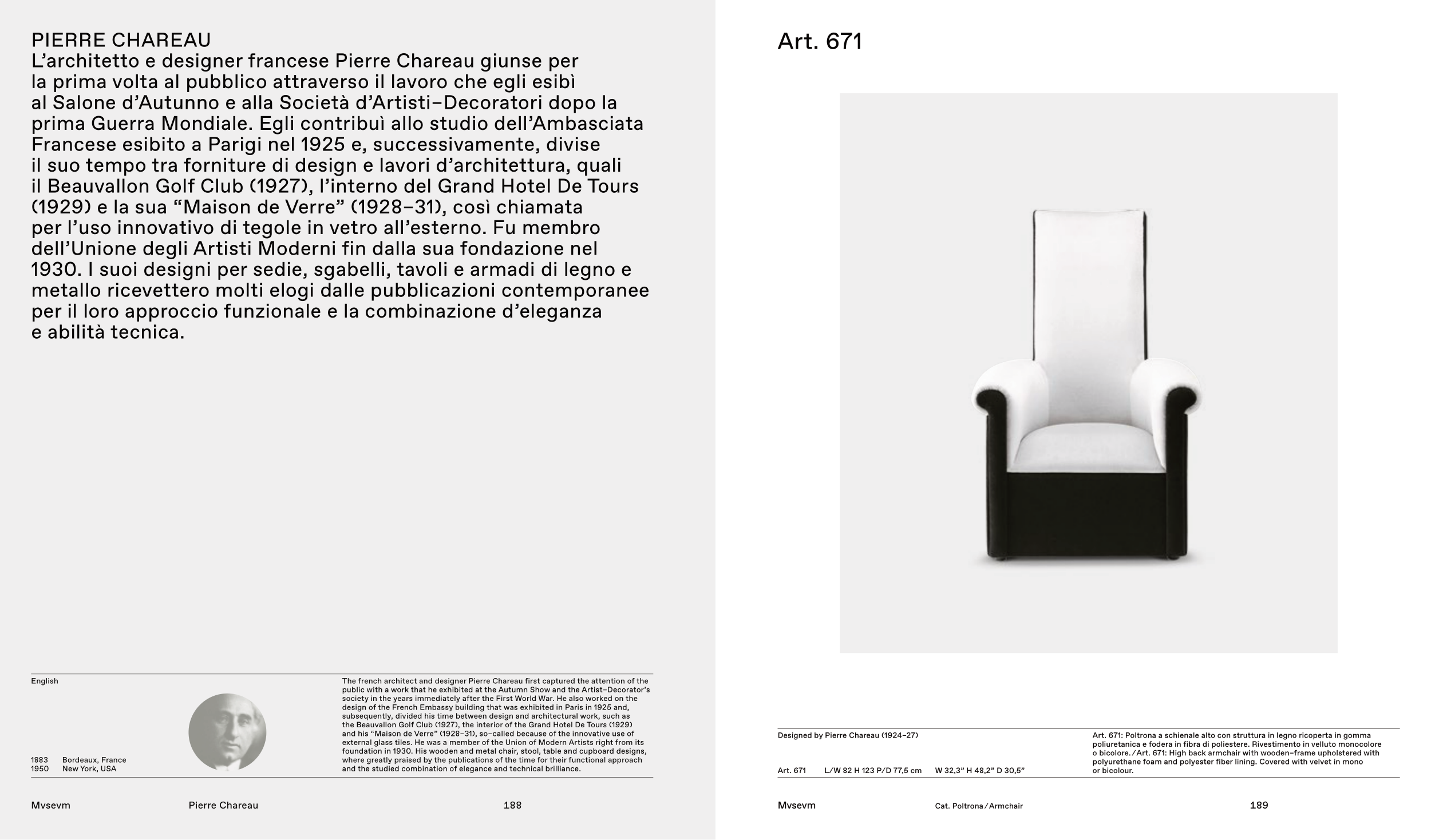188
189
Art. 671
Mvsevm
Cat. Poltrona ⁄ Armchair
Designed by Pierre Chareau (1924–27)
Art. 671
L ⁄ W 82 H 123 P ⁄ D 77,5 cm
W 32,3” H 48,2” D 30,5”
Art. 671: Poltrona a schienale alto con struttura in legno ricoperta in gomma
poliuretanica e fodera in fibra di poliestere. Rivestimento in velluto monocolore
o bicolore. ⁄ Art. 671: High back armchair with wooden–frame upholstered with
polyurethane foam and polyester fiber lining. Covered with velvet in mono
or bicolour.
PIERRE CHAREAU
L’architetto e designer francese Pierre Chareau giunse per
la prima volta al pubblico attraverso il lavoro che egli esibì
al Salone d’Autunno e alla Società d’Artisti–Decoratori dopo la
prima Guerra Mondiale. Egli contribuì allo studio dell’Ambasciata
Francese esibito a Parigi nel 1925 e, successivamente, divise
il suo tempo tra forniture di design e lavori d’architettura, quali
il Beauvallon Golf Club (1927), l’interno del Grand Hotel De Tours
(1929) e la sua “Maison de Verre” (1928–31), così chiamata
per l’uso innovativo di tegole in vetro all’esterno. Fu membro
dell’Unione degli Artisti Moderni fin dalla sua fondazione nel
1930. I suoi designi per sedie, sgabelli, tavoli e armadi di legno e
metallo ricevettero molti elogi dalle pubblicazioni contemporanee
per il loro approccio funzionale e la combinazione d’eleganza
e abilità tecnica.
The french architect and designer Pierre Chareau first captured the attention of the
public with a work that he exhibited at the Autumn Show and the Artist–Decorator’s
society in the years immediately after the First World War. He also worked on the
design of the French Embassy building that was exhibited in Paris in 1925 and,
subsequently, divided his time between design and architectural work, such as
the Beauvallon Golf Club (1927), the interior of the Grand Hotel De Tours (1929)
and his “Maison de Verre” (1928–31), so–called because of the innovative use of
external glass tiles. He was a member of the Union of Modern Artists right from its
foundation in 1930. His wooden and metal chair, stool, table and cupboard designs,
where greatly praised by the publications of the time for their functional approach
and the studied combination of elegance and technical brilliance.
1883
Bordeaux, France
1950
New York, USA
English
Mvsevm
Pierre Chareau


